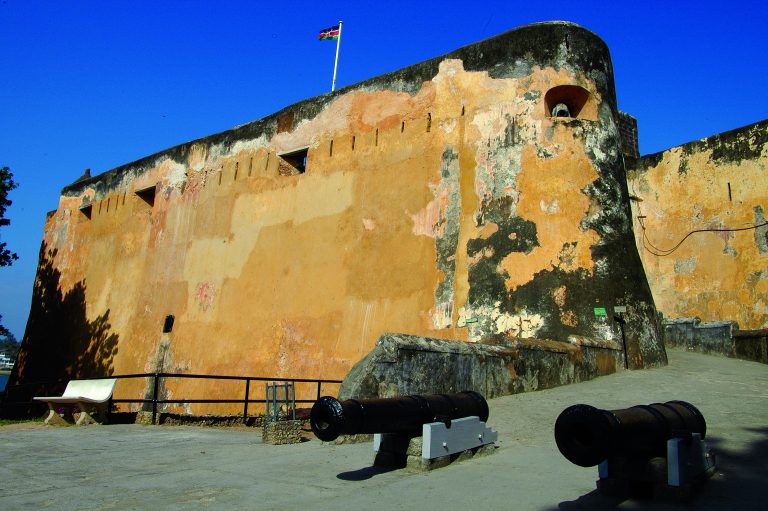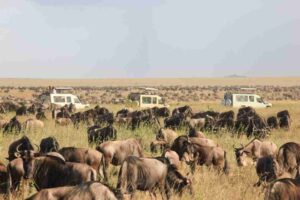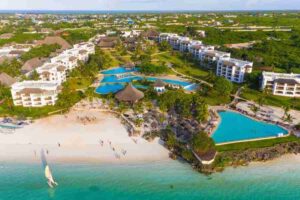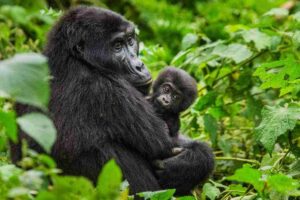Kenya is a land brimming with historical significance, offering a diverse range of sites that span millions of years. Here are some of the best historical sites in Kenya, categorized for a comprehensive understanding:

Prehistoric Sites: Cradle of Humankind
Kenya, particularly the Great Rift Valley, holds crucial evidence of early human evolution.
- Koobi Fora (Turkana Basin): Located within Sibiloi National Park, this is one of the most significant paleoanthropological sites in the world. It has yielded numerous hominin fossils and stone tools, dating back over 4 million years, providing invaluable insights into human ancestry. The Koobi Fora Museum houses many of these incredible finds.
- Olorgesailie Prehistoric Site: Situated in the Great Rift Valley, this site is famous for its massive collection of Acheulean handaxes, believed to have been used by Homo erectus between 200,000 and 1.2 million years ago. It offers a glimpse into the lives and activities of early humans.
- Kariandusi Prehistoric Site: Near Lake Elementaita, this Early Stone Age site dates back approximately 1 million years. Discovered by Louis Leakey, it was once thought to be a handaxe “factory.” The site has a museum showcasing the archaeological finds.
- Hyrax Hill Prehistoric Site and Museum (Near Nakuru): This Neolithic and Iron Age site features the remains of a Sirikwa culture settlement, including a fortress and burial mounds, dating back to around 1500 BC. The museum displays artifacts found at the site.
Ancient Swahili Settlements: Coastal Heritage
Kenya’s coast is dotted with the ruins of ancient Swahili settlements, testaments to centuries of trade and cultural exchange.
- Lamu Old Town (UNESCO World Heritage Site): The oldest and best-preserved Swahili settlement in East Africa, Lamu retains its traditional functions and architecture. Built from coral stone and mangrove timber, its narrow streets, grand houses with carved wooden doors, and historical mosques offer a step back in time.
- Gedi Ruins (Near Malindi) (UNESCO World Heritage Site): An abandoned Swahili city dating back to the 13th century, Gedi flourished through trade before its mysterious decline in the 17th century. The extensive ruins include palaces, mosques, tombs, and houses, offering a fascinating look into Swahili urban life.
- Jumba la Mtwana (Near Mombasa): Meaning “large house of the slaves” in Swahili, these ruins showcase the remains of a 14th-century Swahili settlement with mosques, houses, and tombs, illustrating the architecture and social structure of the time.
- Takwa Ruins (Manda Island, Lamu Archipelago): These well-preserved ruins are the remains of a 15th and 16th-century Swahili town that was abandoned in the 17th century. The prominent feature is the large Friday Mosque with its unique pillar tomb.
- Mambrui (North of Malindi): An ancient port town with a history dating back to the 7th century, Mambrui was a significant trading center. While fewer ruins remain compared to other sites, its historical importance is evident in local traditions and archaeological finds, including Chinese pottery indicating early trade links.
- Siyu Fort (Pate Island, Lamu Archipelago): Built in the 19th century, this fort represents a later period of Swahili history and the resistance against Omani rule.
Colonial Era Sites: A Nation Forged
Kenya’s more recent history is marked by the colonial period, which has left behind significant sites.
- Fort Jesus (Mombasa) (UNESCO World Heritage Site): Built by the Portuguese in the late 16th century to control trade routes in the Indian Ocean, Fort Jesus has a rich and complex history, having been under Portuguese, Arab, and British control. It now serves as a museum, showcasing the region’s maritime past.
- Nairobi Railway Museum: This museum tells the story of the “Lunatic Express,” the railway line built by the British that was crucial in opening up the interior of East Africa. It houses a collection of locomotives and rolling stock, offering a glimpse into the colonial era’s infrastructure development.
- Karen Blixen Museum (Nairobi): The former home of the Danish author Karen Blixen, famous for her book “Out of Africa,” this house offers insight into colonial life in Kenya and the early European settlers.
- Uhuru Gardens (Nairobi): A significant memorial park commemorating Kenya’s independence. The gardens feature monuments marking the end of colonial rule and the birth of the Kenyan nation. “Uhuru” means “freedom” in Swahili.
- Koobi Fora Museum (Marsabit County): While primarily focused on prehistoric finds, the museum’s existence is also linked to the colonial and post-colonial efforts in archaeological research and preservation.
- Various Colonial-era Buildings in Nairobi and other towns: Many cities and towns across Kenya still feature architecture from the colonial period, reflecting the styles and influences of the time.
Other Significant Historical and Cultural Sites:
- Thimlich Ohinga Archaeological Site (Migori County) (UNESCO World Heritage Site): A well-preserved 16th-century dry-stone walled settlement, the largest and most complete of its kind in the Lake Victoria Basin, representing the early pastoral communities of the region.
- Sacred Mijikenda Kaya Forests (Coastal Region) (UNESCO World Heritage Site): These eleven sacred forests hold the remains of fortified villages (Kayas) of the Mijikenda people, built from the 16th century onwards. They are now considered sacred sites and are vital to the Mijikenda cultural heritage.
- Narok Museum: Focuses on preserving and showcasing the traditional culture of the Maasai people.
- Kisumu Museum: Exhibits cultural history, traditional Luo artifacts, and information about the region’s past.
- Lamu Museum: Housed in a former fortress and jail, it features exhibits on the marine, freshwater, and terrestrial ecosystems of the Lamu archipelago, as well as its history.
Exploring these historical sites provides a rich and multifaceted understanding of Kenya’s past, from the earliest traces of humanity to the development of vibrant coastal cultures and the shaping of the modern nation. Remember to check opening hours and any specific regulations before visiting these sites.













